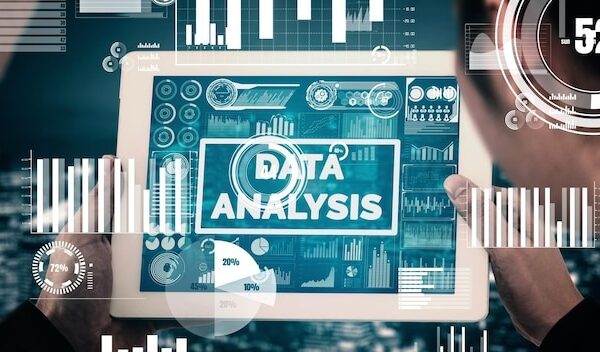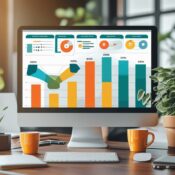Descriptive Predictive Prescriptive Analytics

Descriptive Predictive Prescriptive Analytics
Understand the differences between descriptive, predictive, and prescriptive analytics to transform data into insights for informed decision-making.
In today’s data-driven world, understanding and leveraging various types of analytics can significantly enhance business operations and customer experiences. At Rapid Phone Center, our goal is to equip you with a thorough understanding of descriptive, predictive, and prescriptive analytics. This guide will explore the different types of analytics, their applications, and how they can be effectively utilized to drive business success.

Predictive Descriptive Analytics: Leveraging Historical Data to Forecast Trends and Drive Business Insights
Descriptive Analytics, Predictive Analytics, and Prescriptive Analytics are three essential types of analytics that offer valuable insights into data. Here’s a breakdown of each:
- Definition: Descriptive analytics focuses on summarizing historical data to understand what has happened in the past. It provides insights through statistical techniques and data aggregation.
- Applications: This type of analytics helps businesses understand past performance, identify trends, and generate reports. For example, in Rapid Phone Center, descriptive analytics can be used to analyze past sales data to evaluate which phone models were the best sellers last quarter. Rapid Phone Center uses advanced Data Analytics Systems to enhance customer insights, optimize operations, and drive smarter business decisions.
At Rapid Phone Center, we specialize in predictive prescriptive descriptive analytics to transform your data into actionable insights. Our predictive analytics forecast future trends, prescriptive analytics recommend optimal actions, and descriptive analytics provide detailed insights into past performance. With our expertise, you gain a comprehensive view to make informed decisions and drive success.
- Definition: Predictive analytics uses statistical models and machine learning techniques to forecast future outcomes based on historical data. It aims to predict what might happen in the future.
- Applications: Businesses use predictive analytics to anticipate future trends and behaviors. At Rapid Phone Center, predictive analytics can be applied to forecast customer demand for specific phone models or predict future repair requests based on historical data.

Rapid Phone Center excels in both descriptive analysis and predictive analysis to help you make data-driven decisions. Our descriptive analysis provides clear insights into past performance, while our predictive analysis forecasts future trends and opportunities. By combining these powerful analytical approaches, we empower your business with actionable insights for strategic growth and success.
- Definition: Prescriptive analytics goes beyond predicting future outcomes by recommending actions to achieve desired results. It uses optimization and simulation techniques to suggest the best course of action.
- Applications: This type of analytics helps businesses make informed decisions about how to handle future scenarios. For instance, Rapid Phone Center might use prescriptive analytics to determine the best inventory management strategy to optimize stock levels and minimize costs. Rapid Phone Center leverages a powerful Data Analytics Platform to boost efficiency, drive insights, and improve decision-making across operations.
Descriptive Predictive and Prescriptive Analytics: A Comprehensive Approach to Data-Driven Decision Making
Understanding the differences between these types of analytics is crucial for leveraging them effectively:
- Descriptive vs Predictive Analytics: While descriptive analytics answers “What happened?” by summarizing past data, predictive analytics answers “What is likely to happen?” by forecasting future events based on historical data.
- Predictive vs Prescriptive Analytics: Predictive analytics focuses on forecasting future outcomes, whereas prescriptive analytics goes a step further by recommending actions to influence those outcomes.
- Descriptive Analytics vs Prescriptive Analytics: Descriptive analytics helps in understanding past events, while prescriptive analytics is used to decide the best actions for future scenarios.
At Rapid Phone Center, we harness the power of descriptive prescriptive and predictive analysis to elevate your business strategies. Our comprehensive approach helps you understand past trends, recommend optimal actions, and forecast future outcomes. With our expert analytics, you gain actionable insights that drive smarter decisions and enhance overall performance.

Prescriptive Predictive and Descriptive Analytics
Descriptive and Predictive Analytics in a business context offer comprehensive insights:
- Descriptive Predictive Prescriptive Analytics: Combining these three types of analytics allows businesses to gain a complete understanding of their data, forecast future trends, and make informed decisions to improve outcomes. For example, Rapid Phone Center can use all three types of analytics to analyze past sales data, predict future trends, and prescribe strategies to enhance sales performance.
- Descriptive and Predictive Analytics: Using both descriptive and predictive analytics together helps in understanding past performance and anticipating future trends. This combination can provide a well-rounded view of business operations.
- Descriptive Prescriptive and Predictive Data Analytics: Integrating descriptive, prescriptive, and predictive analytics offers a holistic approach to data analysis, helping businesses make informed decisions based on historical insights, future predictions, and recommended actions. Rapid Phone Center harnesses Big Data Analytics to uncover insights, optimize customer interactions, and drive smarter business strategies.
At Rapid Phone Center, we leverage cutting-edge descriptive analytics and predictive analytics. Our advanced data analysis techniques help you understand past trends and forecast future outcomes, optimizing decision-making and driving growth. Trust us to transform your data into actionable strategies for success.
Descriptive Prescriptive Predictive Data Analytics: Unlocking the Full Potential of Data for Strategic Insights and Decision-Making
Incorporating descriptive, predictive, and prescriptive analytics into your business strategy can provide valuable insights and drive better decision-making. At Rapid Phone Center, understanding these analytics types and their applications can lead to more effective management of resources, improved customer service, and optimized operations. By leveraging these analytics, businesses can gain a competitive edge and achieve greater success in the ever-evolving market. Rapid Phone Center integrates AI Customer Service to deliver smart, efficient support, enhancing customer interactions and optimizing service quality.

- Descriptive Analysis and Predictive Analysis: By examining historical repair data (descriptive analysis), Rapid Phone Center can predict future repair trends (predictive analysis). This helps in planning resources and managing inventory more effectively.
- Descriptive Prescriptive Predictive Analytics: Using descriptive analytics to understand past customer behavior, predictive analytics to forecast future needs, and prescriptive analytics to recommend marketing strategies can enhance customer engagement and optimize marketing efforts. Rapid Phone Center specializes in Ecommerce Fulfillment, ensuring fast, accurate order processing, inventory management, and customer satisfaction.
- Descriptive and Predictive Analysis: Combining descriptive and predictive data analysis allows Rapid Phone Center to not only understand past performance but also anticipate future customer needs, leading to better service planning and inventory management.
For more insights on how to implement these analytics in your business, feel free to reach out to us at Rapid Phone Center. Our team is here to help you navigate the world of analytics and unlock the full potential of your data.
Frequently Asked Questions
Discover Rapid Phone Center’s FAQs on predictive and descriptive analytics, offering insights into our data-driven solutions and expert services.
What is descriptive analytics?
Descriptive analytics involves summarizing historical data to identify trends and patterns. It provides insights into what has happened in the past through methods like data aggregation, data mining, and statistical analysis.

What is predictive analytics?
Predictive analytics uses statistical models and machine learning techniques to forecast future outcomes based on historical data. It helps in identifying potential future trends, behaviors, and risks.
What are the common techniques used in descriptive analytics?
Common techniques include data visualization (charts and graphs), summary statistics (mean, median, mode), and exploratory data analysis (EDA). Rapid Phone Center provides comprehensive Back Office Services to streamline operations, manage tasks efficiently, and support business growth.
What techniques are used in predictive analytics?
Techniques include regression analysis, classification algorithms, time series analysis, and machine learning models such as decision trees, random forests, and neural networks.
You might also want to explore the offerings we provide:
- Machine Learning Predictive Analytics
- Descriptive Predictive and Prescriptive Analytics
- Predictive Marketing Analytics
Thanks, Good Luck to You





